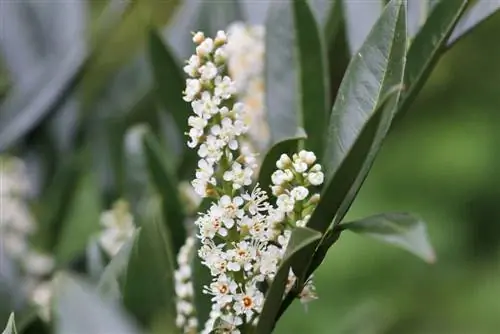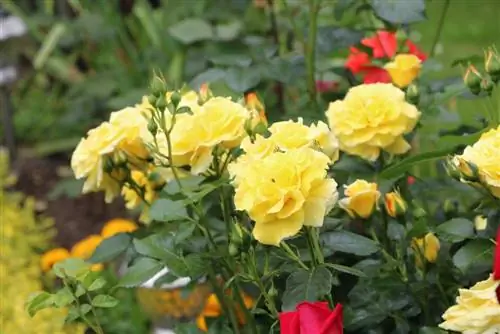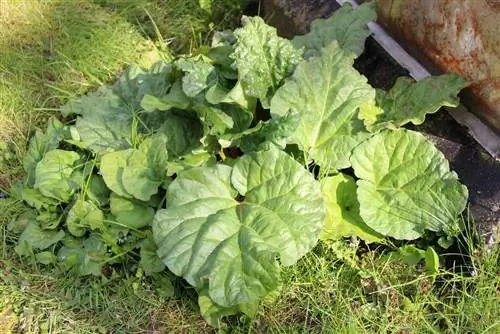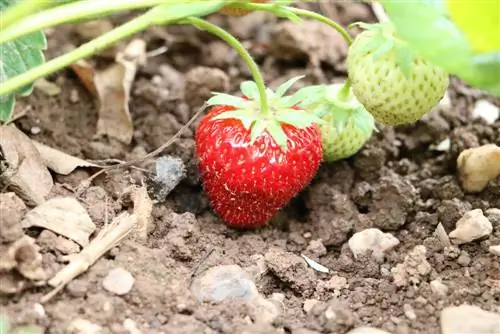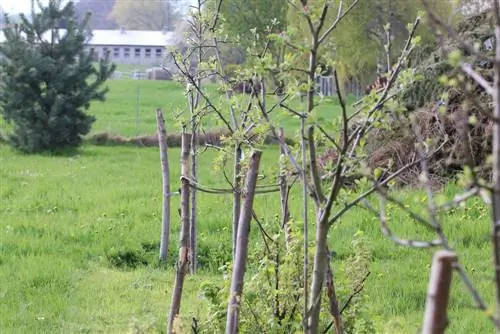- Author admin [email protected].
- Public 2023-12-17 03:39.
- Last modified 2025-01-24 12:45.
All representatives of Prunus laurocerasus are robust and resilient. These characteristics in combination with the dense, evergreen foliage make cherry laurels popular hedge plants. The tree is rarely found in a solitary position. This is hardly surprising given the fact that you can create an attractive privacy screen for your garden in a short space of time with just a few plants. Evergreen plants differ minimally from their deciduous plant neighbors when it comes to care. A few special features should also be taken into account when cultivating.
Undemanding and easy to care for
The plant with its elliptical leaves and fast growth continues to be very popular. The close relative of the cherry and plum retains its green foliage even in winter and is an eye-catcher in the bare garden. You can purchase a large selection of varieties and hybrid forms from well-stocked specialist retailers. The plants differ in their growth habit, size and leaf color. The different varieties of cherry laurel do have one thing in common: the plants are hardly picky about their location. The trees need the following requirements in order to develop their full foliage splendor:
- Fully shaded planting locations inhibit the growth of cherry laurel
- The plant is not suitable for planting under trees
- The plants need to be watered all year round
- Little tolerance for waterlogging
Prunus laurocerasus is robust, but the plant is not suitable for every type of garden. Depending on the variety, the plants can reach a height and width of well over 300 cm. If you cultivate cherry laurel as a privacy hedge, you should allow enough distance. A depth of 60 cm or more is not uncommon for older specimens. On smaller properties, the strong growth of plants can quickly become a problem. For this reason, the evergreen plant is also not suitable for long-term cultivation in a pot.
Tip:
From March to August, the cherry laurel should be supplied with nutrients at regular intervals. This can be done with a slow-release fertilizer from the market or by spreading compost.
The ideal planting time
Home-grown or purchased perennials can be transplanted into the garden from spring to late autumn. Summer is particularly suitable for baled goods, although a few relevant things must be taken into account when planting:
- Do not plant the trees in the midday heat
- The root network should first take a sufficient water bath
- Insert the cherry laurel up to the top edge of the root
- The soil must not dry out
- Water regularly
- Maintain minimum distance between individual trees
- Avoid immediate proximity to property boundaries and house walls
The frost-free days in spring are suitable for bare-rooted shrubs, such as cuttings. By the time leaves and buds emerge, the underground parts of the plant should be firmly established. To protect against cold frost, apply a thick layer of brushwood or bark mulch around the tree. The material warms and at the same time provides the cherry laurel with important nutrients.
Autumn is the best time to relocate evergreen trees to their final location in the garden. In the cold season, the plant can concentrate on developing its roots so that it can then sprout vigorously in the warm spring. With the appropriate preparation, you don't have to be afraid of cold and snow. In practice it has been shown that in many cases cherry laurel dies in winter from drought rather than from frostbite. Before planting, make sure that the roots of the plant penetrate completely into the ball of soil.
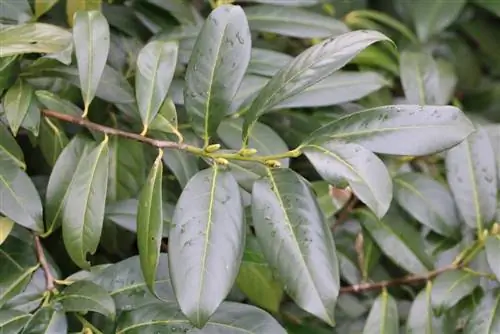
Only strong plants survive the cold season unscathed. You should overwinter weak or poorly developed trees in a bucket in a frost-proof place. For example, wrap the containers thickly with burlap and store them in the protected area of house walls or in the cool garage.
Site preparation
In addition to the best planting time, the preparation of the site plays a relevant role. The plant doesn't care whether the substrate has an alkaline or acidic value. Cherry laurel can cope with any pH value. The only soil requirements are:
- Humus-rich
- Permeable
- Profound
- Slightly clayey
Dry and heavily compacted soil has a negative effect on the growth of trees. The roots can only develop inadequately and are unable to absorb water and nutrients in large quantities. Regular and extensive mulching would be necessary to effectively support the growth of the plants. With a simple measure you can counteract this laborious activity and permanently loosen the substrate. Work expanded clay or small pebbles into the soil over a large area. When creating a hedge, the substrate is removed to a depth of at least 20 cm and the excavated earth is mixed with humus and the inorganic material.
Tip:
All parts of the cherry laurel plant are poisonous. Wear gloves to avoid direct contact with skin.
Minimum distance when planting hedges
In order for the cherry laurel to come into its own, a few rules must be followed when planting. The minimum distance is one of these relevant points. The wood is preferably used as a hedge. When creating the dense, evergreen privacy wall, the individual plants must not hinder each other's growth. 3 plants per meter create an impenetrable barrier after just two to three years. If you want to invest a little more time, keep a minimum distance of approx. 110 cm between the individual plants. For smaller and weaker varieties, the distance can be reduced to 90 cm.
Conclusion
The popular tree is a strong-growing and robust hedge plant. When caring for the rose family, only a few relevant points need to be taken into account. The best time to plant the evergreen ornamental tree is in autumn. Baled goods with a well-developed root system easily defy the sub-zero temperatures in winter. Weak and bare-rooted plants are transplanted into the garden in spring and summer. The disadvantage: The maintenance effort is slightly higher and the plants need longer before they acclimate to the new location.


